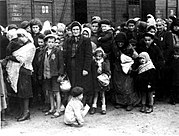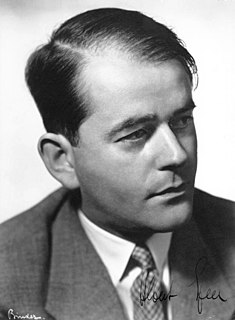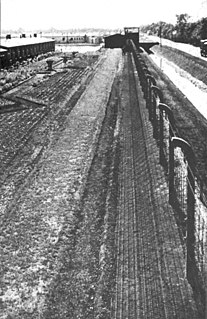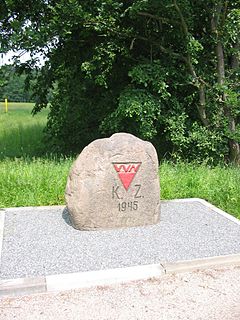| Part of a series on | ||||||||||
| The Holocaust | ||||||||||
|---|---|---|---|---|---|---|---|---|---|---|
 Jews on selection ramp at Auschwitz, May 1944 | ||||||||||
| ||||||||||
Camps
| ||||||||||
Atrocities | ||||||||||
Arbeitsdorf ("work-village") was a concentration camp established by the Nazis in Stadt des KdF-Wagens bei Fallersleben 1942.
| Part of a series on | ||||||||||
| The Holocaust | ||||||||||
|---|---|---|---|---|---|---|---|---|---|---|
 Jews on selection ramp at Auschwitz, May 1944 | ||||||||||
| ||||||||||
Camps
| ||||||||||
Atrocities | ||||||||||
Arbeitsdorf ("work-village") was a concentration camp established by the Nazis in Stadt des KdF-Wagens bei Fallersleben 1942.
In 1936, an Austrian car engineer by the name of Ferdinand Porsche designed a prototype of a car that would be affordable enough for all Germans to buy. He then showed his idea to the then dictator of Germany, Adolf Hitler. Hitler liked his idea and ordered the manufacture of the car which was known as the KDF-Wagen or later known as the Volkswagen vehicle.
With Hitler's approval, Porsche and his business partner Albert Speer set up a factory in Fallersleben, a town 30 miles (48 kilometres) northeast of the city of Braunschweig, and because of the war, all production from this camp was to be used for military purposes only. In 1942, Porsche and Speer started a project to see how they could use concentration camp inmates for cheaper, and large-scale production of their cars, in order to benefit their industry. The prisoners of Arbeitsdorf were skilled workforce used for construction tasks, building a casting plant and other facilities and receiving better captivity conditions in return.
So on 8 April 1942 a new concentration camp, Arbeitsdorf, was opened with 800 inmates from the Neuengamme concentration camp. The camp commands of Neuengamme and Arbeitsdorf were united in the person of Martin Weiss, the camp commander of Neuengamme at this time. On 26 April 1942 inmates from the Sachsenhausen concentration camp and on 23 June inmates from Buchenwald arrived. Mid-July 1942 camp commander became Wilhelm Schitli, former Schutzhaft-camp commander in Neuengamme. [1]
On 11 October 1942, six months after the camp was first established, production of the vehicles was stopped and the camp was closed. A minimum of six prisoners perished at Arbeitsdorf. These six deaths are officially listed as suicide, heart attack or accident. [1]
The museum Stadtschloss Wolfsburg has a documentation about the Nazi victims with its own exhibition of the slave workers at the Volkswagen factory. (Stadtmuseum Schloss Wolfsburg, Schlossstraße 8, 38448 Wolfsburg)

Albert Speer was the Minister of Armaments and War Production in Nazi Germany during most of World War II. A close ally of Adolf Hitler, he was convicted at the Nuremberg trials and sentenced to 20 years in prison.

Ferdinand Porsche was an Austrian-German automotive engineer and founder of the Porsche car company. He is best known for creating the first gasoline-electric hybrid vehicle (Lohner-Porsche), the Volkswagen Beetle, the Mercedes-Benz SS/SSK, several other important developments and Porsche automobiles.

Wolfsburg is the fifth largest city in the German state of Lower Saxony. Located on the River Aller. It lies about 75 km (47 mi) east of Hanover and 230 km (143 mi) west of Berlin.

The Neuengamme concentration camp was a network of Nazi German concentration camps in Northern Germany that consisted of the main camp, Neuengamme, and its over 85 satellite camps. Established in 1938 near the village of Neuengamme in the Bergedorf district of Hamburg, the Neuengamme camp became the largest concentration camp in Northwest Germany. Over 100,000 prisoners came through Neuengamme and its subcamps, 24 of which were for women. The verified death toll is 42,900: 14,000 in the main camp, 12,800 in the subcamps, and 16,100 in the death marches and bombings during the final weeks of World War II. Following Germany's defeat in 1945, the British Army used the site as an internment camp for SS and other Nazi officials. In 1948, the British transferred the land to the Free Hanseatic City of Hamburg, which summarily demolished the camp's wooden barracks and built in its stead a prison cell block, converting the former concentration camp site into two state prisons operated by the Hamburg authorities from 1950 to 2004. Following protests by various groups of survivors and allies, the site now serves as a memorial. It is situated 15 km southeast of the centre of Hamburg.

The Mauthausen–Gusen concentration camp complex consisted of the Mauthausen concentration camp on a hill above the market town of Mauthausen plus a group of nearly 100 further subcamps located throughout Austria and southern Germany. The three Gusen concentration camps in and around the village of St Georgen/Gusen, just a few kilometres from Mauthausen, held a significant proportion of prisoners within the camp complex, at times exceeding the number of prisoners at the Mauthausen main camp.

Stutthof was a Nazi German concentration camp established in a secluded, wet, and wooded area near the small town of Sztutowo 34 km (21 mi) east of the city of Danzig in the former territory of the Free City of Danzig. The camp was set up around existing structures after the invasion of Poland in World War II, used for the imprisonment of Polish leaders and intelligentsia. The actual barracks were built the following year by hundreds of prisoners.
Nazi Germany maintained concentration camps throughout the territories it controlled before and during the Second World War. The first Nazi camps were erected in Germany in March 1933 immediately after Hitler became Chancellor and his Nazi Party was given control of the police by Reich Interior Minister Wilhelm Frick and Prussian Acting Interior Minister Hermann Göring. Used to hold and torture political opponents and union organizers, the camps initially held around 45,000 prisoners. In 1933–1939, before the onset of war, most prisoners consisted of German Communists, Socialists, Social Democrats, Roma, Jehovah's Witnesses, homosexuals, and persons accused of 'asocial' or socially 'deviant' behavior by the Germans.

The Gardelegen massacre was a massacre perpetrated by the German local population from Volkssturm, Hitlerjugend and local firefighters with minor direction from the SS during World War II. On April 13, 1945, on the Isenschnibbe estate near the northern German town of Gardelegen, the troops forced 1,016 slave laborers who were part of a transport evacuated from the Mittelbau-Dora Concentration Camp and from the Hannover-Stöcken Concentration Camp into a large barn which was then set on fire. Most of the prisoners were burned alive; some were shot trying to escape. The crime was discovered two days later by F Company, 2nd Battalion, 405th Regiment, U.S. 102nd Infantry Division, when the U.S. Army occupied the area. Gardelegen became a part of the newly established German Democratic Republic in 1947 and is now in Saxony-Anhalt, Germany.

The SS Main Economic and Administrative Office, abbreviated SS-WVHA, was a Nazi organization responsible for managing the finances, supply systems and business projects for the Allgemeine-SS. It also ran the concentration camps and was instrumental in the implementation of the Final Solution through such subsidiary offices as the Concentration Camps Inspectorate and SS camp guards.

Holocaust victims were people who were targeted by the government of Nazi Germany for various discriminatory practices due to their ethnicity, religion, political beliefs, or sexual orientation. These institutionalized practices came to be called The Holocaust, and they began with legalized social discrimination against specific groups, and involuntary hospitalization, euthanasia, and forced sterilization of those considered physically or mentally unfit for society. These practices escalated during World War II to include non-judicial incarceration, confiscation of property, forced labor, sexual slavery, medical experimentation, and death through overwork, undernourishment, and execution through a variety of methods, with the genocide of different groups as the primary goal.

The Wöbbelin camp, near the city of Ludwigslust, was a subcamp of the Neuengamme concentration camp. The SS had established Wöbbelin to house concentration camp prisoners whom the SS had evacuated from other camps to prevent their liberation by the Allies. At its height, Wöbbelin held some 5,000 inmates, most of whom were suffering from starvation and disease. The camp was freed on May 2, 1945.

Karl-Friedrich Höcker was a Nazi war criminal, German commander in the SS and the adjutant to Richard Baer, who was a commandant of Auschwitz I concentration camp from May 1944 to December 1944. In 2006, a photo album created by Höcker, with some 116 pictures from his time at Auschwitz, was given to the United States Holocaust Memorial Museum, sparking new interest in his activities as a concentration camp administrator.

Dessauer Ufer was a subcamp of the Neuengamme concentration camp in Nazi Germany, located inside the Port of Hamburg on the Kleiner Grasbrook in Veddel. It was in operation from July 1944 to April 1945. Inmates were mostly used for forced labour at rubble clearing and building in the Hamburg port area.
Alfred Trzebinski was an SS-physician at the Auschwitz, Majdanek and Neuengamme concentration camps in Nazi Germany. He was sentenced to death and executed for his involvement in war crimes committed at the Neuengamme subcamps.

Arnold Strippel was a German SS commander during the Nazi era and convicted criminal. As a member of the SS-Totenkopfverbände, while assigned to the Neuengamme concentration camp, he was given the task of murdering the victims of a tuberculosis medical experiment conducted by Kurt Heissmeyer.

Ravensbrück was a German concentration camp exclusively for women from 1939 to 1945, located in northern Germany, 90 km (56 mi) north of Berlin at a site near the village of Ravensbrück. The largest single national group consisted of 40,000 Polish women. Others included 26,000 Jewish women from various countries: 18,800 Russian, 8,000 French, and 1,000 Dutch. More than 80 percent were political prisoners. Many slave labor prisoners were employed by Siemens & Halske. From 1942 to 1945, medical experiments to test the effectiveness of sulfonamides were undertaken.
Anton Piëch was an Austrian-German lawyer and the son-in-law of Ferdinand Porsche. He headed Volkswagenwerk GmbH between 1941 and 1945, which produced the Volkswagen vehicles (KdF-Wagen) at the factory in Wolfsburg, Germany.
The SS-Baubrigaden were a type of subcamp of Nazi concentration camps that were first established in Autumn 1942. These units were usually made up of male non-Jewish prisoners—most were Poles or Soviets. Chances of survival were higher in these mobile units than the main camps they were attached to. The deployment of the Baubrigaden to major cities within the German Reich was the first time the German public became aware of the living conditions in concentration camps.